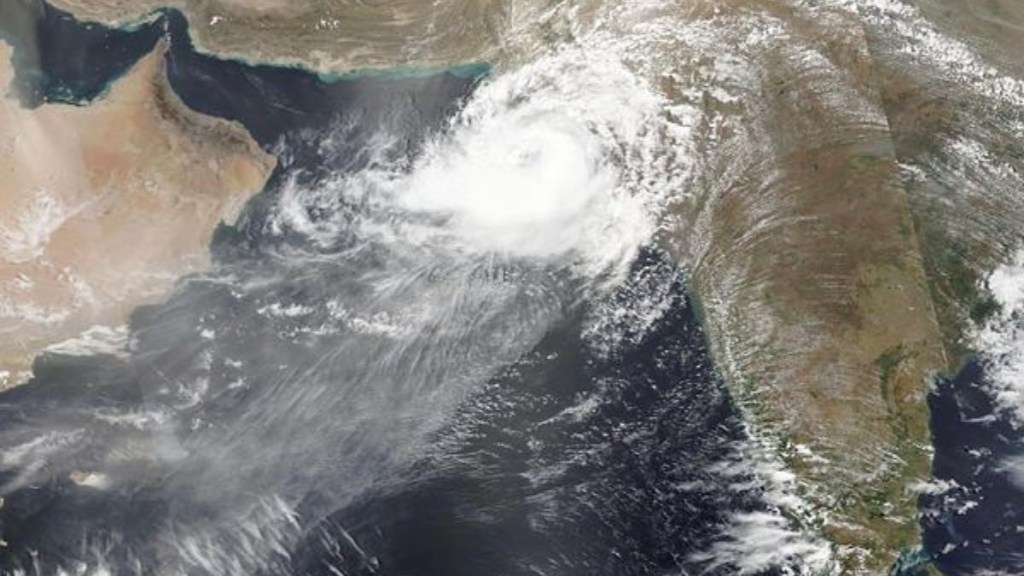After stirring in the Arabian Sea for over a week, Cyclone Biparjoy ripped through Gujarat’s Kutch and parts of the Saurashtra region on Thursday and left a trail of destruction behind it. The cyclone started making landfall near Gujarat’s Jakhau Port from 6.30 pm and the process continued till 2.30 am with gusty winds and rains wreaking havoc in the region.
The very severe cyclonic storm unleashed destructive wind speeds of up to 140 kmph and incessant rains as trees and electricity poles were uprooted, while seawater entered villages located in low-lying areas. After the landfall process got over, the intensity of Biparjoy receded from ‘very severe’ to ‘severe’ category.
Biparjoy was supercharged twice
The meteorologists noted that Biparjoy had one of the longest life spans of seven days and 12 hours. The storm which was first detected in the Arabian Sea on June 6, 2023 was expected to dissipate in the ocean, however, on June 10, IMD contended that the cyclonic storm was intensifying and would make landfall.
Unusually warm waters helped fuel cyclone Biparjoy’s rapid intensification twice in its lifetime, which wasn’t expected, said experts, adding that this was a result of unusually warm waters of the Arabian Sea, due to global warming.
How climate change made Arabian Sea conducive for severe cyclones
According to the experts, cyclones in the Arabian Sea are relatively rare, although they are becoming more and more frequent in the past few years owing to the rising sea surface temperatures.
The Arabian Sea has experienced a significant transformation in its character over the past four decades. Earlier, the Arabian Sea was noted to be relatively cooler than its counterpart – Bay of Bengal.
According to a NASA report, warmer sea surface temperatures have led to intensification and increased likelihood of severe cyclones as it provides more energy to cyclonic storms.
Key factors contributing to intensification of cyclones
There are three major reasons that contribute to the intensification of the cyclonic storm – sea surface temperature, monsoon patterns, and atmospheric conditions.
The experts have explained how higher sea surface temperatures can result in greater evaporation rates can fuel a cyclonic storm. Due to high heat, the humidity level of the sea will rise which will result in increased moisture availability for cyclone development.
Second, the changing monsoon pattern plays a crucial role in determining the strength and frequency of cyclones, especially in the Arabian Sea, as monsoons influence the conditions necessary for cyclone formation.
Alterations in atmospheric conditions, including wind patterns and vertical wind shear, have also affected the formation and intensification of cyclonic storms. The atmospheric conditions can either enhance or inhibit cyclone formation and intensification.
Why Cyclone Biparjoy is a rude climate change reminder
The very severe cyclonic storm – Biparjoy – was a rude reminder of climate change and a worrying message from nature. The Indian Meteorological Department (IMD) Chief, Mrutyunjay Mohapatra, had underlined that the storm, which made its landfall on the Indian and Pakistani coast yesterday, had the potential to cause extensive damage and flooding in low-lying areas of Saurashtra and Kutch. Hours before its landfall, the weather department had also issued a Code Red, which is an alert when weather conditions are extremely bad and is expected to cause severe damage to life and property, for Gujarat’s Kutch and Saurashtra.
Additionally, just like the disastrous cyclone that hit Kandla in 1998, in which more than 1,774 people were reported missing and the damage estimated at Rs 1,855 crore was caused in the state, Biparjoy was also classified as a Category 3 severe cyclonic storm.
Cyclone Biparjoy is one of the longest cyclones in the Arabian Sea and is the fourth major cyclonic storm to hit the Gujarat coast in the last five years. According to the IMD data, from 1965 to 2022 a total of 13 cyclonic storms were reported in the Arabian Sea in the month of June – of which seven had landfall and six dissipated in the sea.

